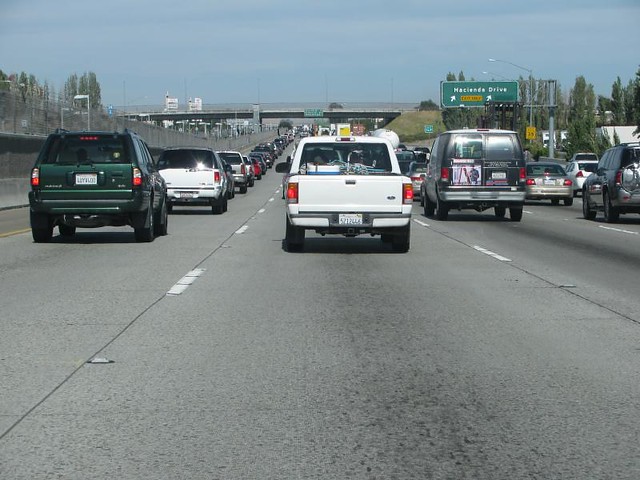
Hi folks,
Apologies for the late date of this one; I understand most of you have probably voted by now in Oregon, unless you like to hand-deliver your ballot to the County the week of the election, like I do.
Regardless, these are my thoughts on the Multnomah County Election, Oregon, November 8 2016:
---
Federal Offices:
President
Hillary Clinton & Tim Kaine
US Senator
Eric Navickas (Pacific Green Party)
Why:
I don't really have anything against Ron Wyden in particular, it's just that I think I like this guy Navickas more, and isn't that what we're supposed to be doing in a democracy, choosing our favorite? No, it's more complicated than that? Well, Wyden is going to win this, so it's just a token vote anyways. A token of my appreciated to Eric Navickas, for doing the right thing and running for a lesser office than President. I truly would like to see a third major party arise, and I would like it to be ideologically similar to the Democrats, but willing to push in different directions on different issues. Push hard for a revenue-positive carbon tax, with the proceeds dedicated to fund GHG-reduction projects in a schedule of different disciplines (Transportation, Land Use, Energy Production, Transportation Modes, Batteries/Power Storage, etc.). I feel like the Greens would more unabashedly pursue these goals, which needs to happen. So, you will see me leaning towards that party throughout this ballot, despite knowing full well that the polls say none of these candidates will win. This year. But maybe they'll try again next time, and try harder.
US Representative, District 3
Earl Blumenauer
---
State Offices
Oregon Governor
Kate Brown
Secretary of State
Brad Avakian (Democrat)
Why:
I feel like the main argument against Brad is that he seems to lack experience at the job of Secretary of State, and he has some really progressive ideas about how that office might be able to push harder to help create a better world for our children. OK, I think I'm cool with that, actually.
State Treasurer
Chris Henry (Progressive/Pacific Green)
Why:
I looked at what Chris would like to do, and I think it's right on. Try to re-direct the massive firehose of money that is the Treasury of the State of Oregon, and use it to help fund projects to help reduce GHG emissions and try to make a better world for our children, all the while continuing to earn a fair rate of return to help pay public retiree pensions and other state obligations? Count me in, I love that vision. How can we help make it happen?
Attorney General
Ellen Rosenbaum (Democrat)
Why:
So, she's married to a guy who helps put out the influential Willamette Week newspaper, and somehow that was wrapped up with the resignation of the previous governor. That's kind of creepy, actually, but I really don't like the politics of the two guys running against her, so I guess she can stay.
Local Offices
Judge of the Court of Appeals, Position 8
Spencer Q. Parsons (Write-in)
Why:
I'm so sick of all of these positions on the ballot where only one person is running.
Really?
Couldn't find ANYBODY else willing to run for that seat? Why do I have to waste ink filling in the damn circle, then? I'd rather cast a protest vote.
City of Portland Commissioner, Position 4
Steve Novick
Why:
If Chloe Eudaly were to come out in support of:
- the Residential Infill Project in a way that would allow more lower-cost units to be built
- better bicycle infrastructure so it's safer to not have to pay for the expense of a car to get around the city
...then she probably would have my vote, as we both went to the same high school (Metropolitan Learning Center), we're both from the east side of Portland, and I like her grassroots support.
However, I have not seen her take anything close to those strong positions on those two very important issues.
I know where Steve Novick stands on both of those issues:
- He co-sponsored the amendment to the Comprehensive Plan in favor of more Missing Middle housing types
- And he worked hard to pass a new city gas tax in order to help fund basic transportation infrastructure, including some better bicycle infrastructure. It's not enough money to fix that incomplete-bicycle-network problem, but it will get a few more projects built right away, and it doesn't preclude doing more to help finish the network later.
That's all it is for me.
Oregon & Local Ballot Measures
Measure 94
Constitutional Amendment: Eliminates mandatory retirement age of 75 for state judges
No.
Why:
I think that, after the age of 75, you've put in your time. I don't want the state to chain these old folks to the gavel just because not attention has been paid to succession planning. Let's train and cultivate the judges of the next generation, so we have good options when our elders get elderly. Then, let's let folks retire at 75 from public service, so they can have their own time to go hiking, ride mountain bikes, go into private practice, run for another office, or just enjoy life while they still can.
Measure 95
Constitutional Amendment: Allows investment in equities by public universities
Yes.
Measure 96
Constitutional Amendment: Dedicates 1.5 of state lottery net proceeds to funding support services for Oregon veterans.
No.
Why:
The Portland City Club says:
"Using the lottery to fund veterans' services means fewer resources could go to other projects already receiving unrestricted lottery funds, such as education."
Measure 97
Increases corporate minimum tax when sales exceed $25 million
Yes.
Measure 98
Requires state funding for career and college readiness, dropout-prevention programs in Oregon high schools
Yes.
Why:
This stuff is important, and this is a well-written measure that is not triggered until sufficient economic growth has occurred.
Measure 99
Outdoor School for All
Yes.
Measure 100
Prohibits purchase or sale of parts or products from endangered animals
Yes
Measure 26-181
Amends charter, extends term limits to three consecutive terms
No.
Why?
What's the problem this measure seeks to solve, exactly? I like seeing churn in this post. If somebody is good, like Earl Blumenauer or Ted Wheeler, we may need their services elsewhere after two terms. Otherwise, let's encourage some churn in the seats.
Measure 26-182
Amends charter, allows commissioners to run for Chair midterm without resigning.
Yes.
Why?
If somebody is good, and wants to be the Chair, we don't want them to have to leave the Commission early to run for that position. We want their expertise constantly employed on the issues before the Commission.
Measure 26-183
Amends Charter, changes elected sheriff position to appointed department head.
Yes.
Why?
This is how we do it in the City of Portland: the Chief of Police reports directly to the Mayor, and if he screws up, his ass is on the line and he
will lose his job if the Mayor thinks that is best -- right now. Given the number of times that this has happened, and given that guys (heck, even the gals) in law enforcement aren't exactly known for being the perfect combination of:
- intelligent,
- well-spoken,
- experts in various multidisciplinary policy areas,
- good at enforcing laws without intentionally or unintentionally engaging in:
- racial profiling,
- excessive force,
- or any number of other potential ways to get in hot water with the public
...I think it's best if the chief law enforcement officer in turn reports to a civilian who has the authority and the duty to fire him or her
right now when necessary.
26-184
Limits contributions, expenditures, requires disclosure in Multnomah County candidate elections
Yes
Why:
There was only one argument in opposition filed in the Voter's Guide. Its title was:
Oregon Elections Are Rigged By Big Money
Let's Keep It That Way
...and it was submitted by the Committee of the Best People with the Best Words.
Say no more...
26-179
Bonds to fund affordable housing.
No.
Why??
This is something that desperately needs to happen. Our city is short by at least 26,000 Affordable Housing Units. This measure would construct about 1300of them, at a cost of $75 a year to the average Portland household.
That means that, if this is the way we're going to solve the problem, it's going to cost the average Portland household roughly $1,500 a year to provide all the necessary units.
For the average Portland household, I think that number would be a big problem.
Further, there are better ways to fund this problem, they're just not comfortable to the decision-makers who put this on the ballot. We should instead be finding seed money from a less-constrained fund source, and using it to start a truly entrepreneurial Community Land Trust, modeled after the land trust in Burlington, Vermont that Bernie Sanders sent seed money to while he was the Mayor. Following that model, the Community Land Trust could provide for-sale and rental Affordable Housing, as well as even homeless shelters.
But that's not what is on the ballot, and if we encourage our leaders to go down the path widened by Measure 26-179, they won't get sent back to the drawing board to find the sort of innovative solutions that they need to be looking harder for -- like the Community Land Trust.
Measure 26-180
Establish tax on recreational marijuana sales; dedicate purposes for funds
Yes.
Why:
This is what marijuana legalization is all about.
Legalize marijuana.
Tax it heavily.
Use the proceeds to fund important programs that need to happen and aren't otherwise sufficiently funded.
That was the promise, and that is what this measure is supposed to deliver. Let's keep the bargain.
Measure 26-178
Renews local option levy; protects natural areas, water quality, fish.
Yes.
---
That's it. I made it easy for you, at least if you live near my district! Now, you can vote without having to do quite so much research yourself (though, I encourage you to do your civic duty and perform the research yourself if you have the time, but I also understand about the time thing -- why do you think I didn't post this like a month ago???) and go drop your ballot off at the library or some other ballot drop site, and feel good about Democracy.
Then, relax and wait for the results to roll in.
cheers,
~Garlynn










.jpg)




